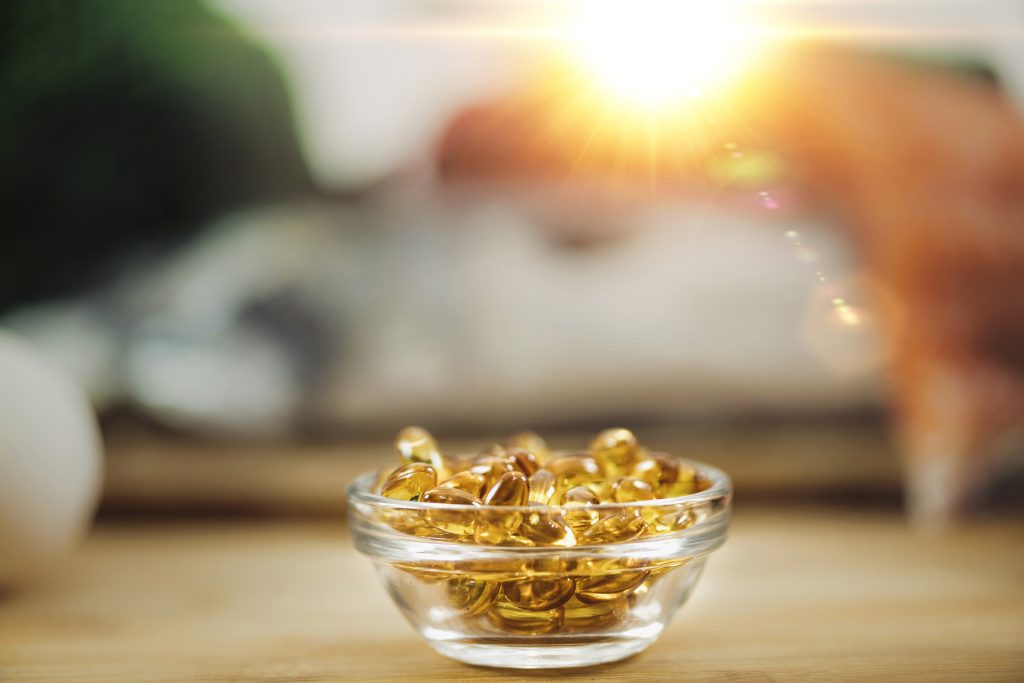Vitamin D is a fat-soluble micronutrient essential for human health, especially for its roles in calcium metabolism, immune support, and the prevention of bone disorders. Its deficiency is a global concern, which has prompted its incorporation in nutraceutical products and food fortification.
However, despite its health benefits, vitamin D is chemically fragile. In oil-based supplements, which are the preferred medium for enhancing absorption, the oxidation of vitamin D poses a major formulation challenge.
Why Vitamin D Oil-Based Supplements Are Prone to Oxidation
Dietary vitamin D occurs predominantly in animal products. It exists mainly in two bioactive forms: Vitamin D3 (cholecalciferol), synthesized in the skin through UVB exposure, and present in animal-derived foods, and vitamin D2 (ergocalciferol), obtained from plant and fungal sources. While both forms can be used in dietary supplements and fortified foods, D3 is generally more bioavailable and more stable than D2 under comparable conditions.
Both forms are structurally sensitive due to the presence of multiple double bonds, which make them highly susceptible to isomerization when exposed to oxygen, light, heat, and acidic environments. D2 is more affected by oxidation due to the presence of an extra double bond compared to D3.
Oil vehicles favor vitamin D3 bioavailability in nutraceuticals, either capsules such as softgel vitamin D or liquid. However, these carriers, rich in polyunsaturated fatty acids, are themselves highly prone to oxidation, initiating a cascade of reactions that also degrade the vitamin.
This unsolved issue has led to the overage of vitamin D3 to compensate for the losses due to degradation, leading to a high dispersion of the real vitamin D3 content compared to the value claimed on the label of a dietary supplement. Regulatory authorities, such as the European Food Safety Authority (EFSA), are aware of this fact and allow a real vitamin D3 content between 80% and 150% of the valued claim on the label [1].
Factors Affecting the Oxidative Stability of Vitamin D Supplements
Several key variables influence the degradation rate of vitamin D supplements, some of them common to most vitamins:
- Molecular form: D3 is more chemically stable and better absorbed in the human body compared to D2. However, both forms are sensitive to oxidation, with D2 being more susceptible to isomerization under acidic or oxidative conditions.
- Carrier oil composition: Oils with a high content of linoleic or linolenic acid oxidize more rapidly, creating reactive oxygen species that destabilize both the oil matrix and the vitamin content.
- Light and oxygen exposure: Photoisomerization and oxidation are major degradation pathways. Without light- and oxygen-resistant packaging, vitamin D loses stability rapidly.
- pH and moisture: Acidic environments promote isomer formation (such as isotachysterol), while high humidity accelerates hydrolytic breakdown. While these processes are not considered classical oxidation, they reduce vitamin D biological activity.
- Processing and storage conditions: High-temperature filling, prolonged heating, and oxygen-rich environments during manufacturing can significantly reduce vitamin retention.
Strategies to Improve Stability and Extend Shelf Life
To extend vitamin D shelf life and maintain its nutritional integrity in oil-based products, several protective strategies have been proposed and validated:
- Natural antioxidants: Incorporating antioxidants, such as mixed tocopherols, is an effective solution. These compounds neutralize free radicals and protect both the oil matrix and the vitamin. It has been confirmed that the sensitivity of vitamin D to humidity, oxygen, and interactions with minerals can be mitigated by vitamin E, thereby enhancing the stability and preservation of cholecalciferol [2].
- Controlled processing environment: To reduce degradation during production, manufacturers should implement controlled-atmosphere manufacturing, including nitrogen flushing during mixing, filling, and sealing. Additionally, low-temperature filling, vacuum-assisted systems, and closed-loop equipment that minimizes oxygen contact and headspace can significantly enhance the oxidative stability of the final product.
- Barrier packaging: Using opaque, oxygen-impermeable materials and inert gas flushing during packaging minimizes oxygen exposure. For oil-based emulsions, dark glass or multilayer plastics combined with a nitrogen atmosphere are essential.
How to Choose Stable Vitamin D Formulations for Nutraceutical Applications
Choosing a stable formulation involves a careful assessment of the form of vitamin D, carrier oil, antioxidant system, encapsulation method, and packaging design. Given the higher oxidative resistance and superior bioavailability, vitamin D3 in oil-based carriers protected by natural antioxidants represents an adequate solution in most nutraceutical contexts.
Btsa offers natural antioxidant systems based on natural tocopherols derived from vegetable oils, which effectively stabilize oil-based supplements, helping to increase vitamin D oxidation stability. Our solutions not only improve product shelf life but also meet the growing demand for clean-label, sustainable formulations. Nutrabiol® is an excellent product for protecting nutritional supplements, preserving their natural ingredients, and increasing product shelf life.
We support nutraceutical manufacturers worldwide in developing formulations that are effective.
Sources
[1] European Commission. Guidance document for competent authorities for the control of compliance with EU legislation on: Tolerances for nutrient values declared on a label. Brussels: Directorate-General Health and Consumers; 2012 Jul. 9 p. Available from: https://ec.europa.eu/food/system/files/2016-10/labelling_nutrition-vitamins_minerals-guidance_tolerances_1212_en.pdf
[2] Jelić D, Vraneš M, Zeljković S, Veličković S, Veljković F, Cvetkovski A, Pejova B, Papović S. Advancing food fortification with kinetics: Stabilizing vitamin D3 through calcium carbonate-based vehicles. Food Chem. 2025 Sep 30;487:144811. doi: 10.1016/j.foodchem.2025.144811.

